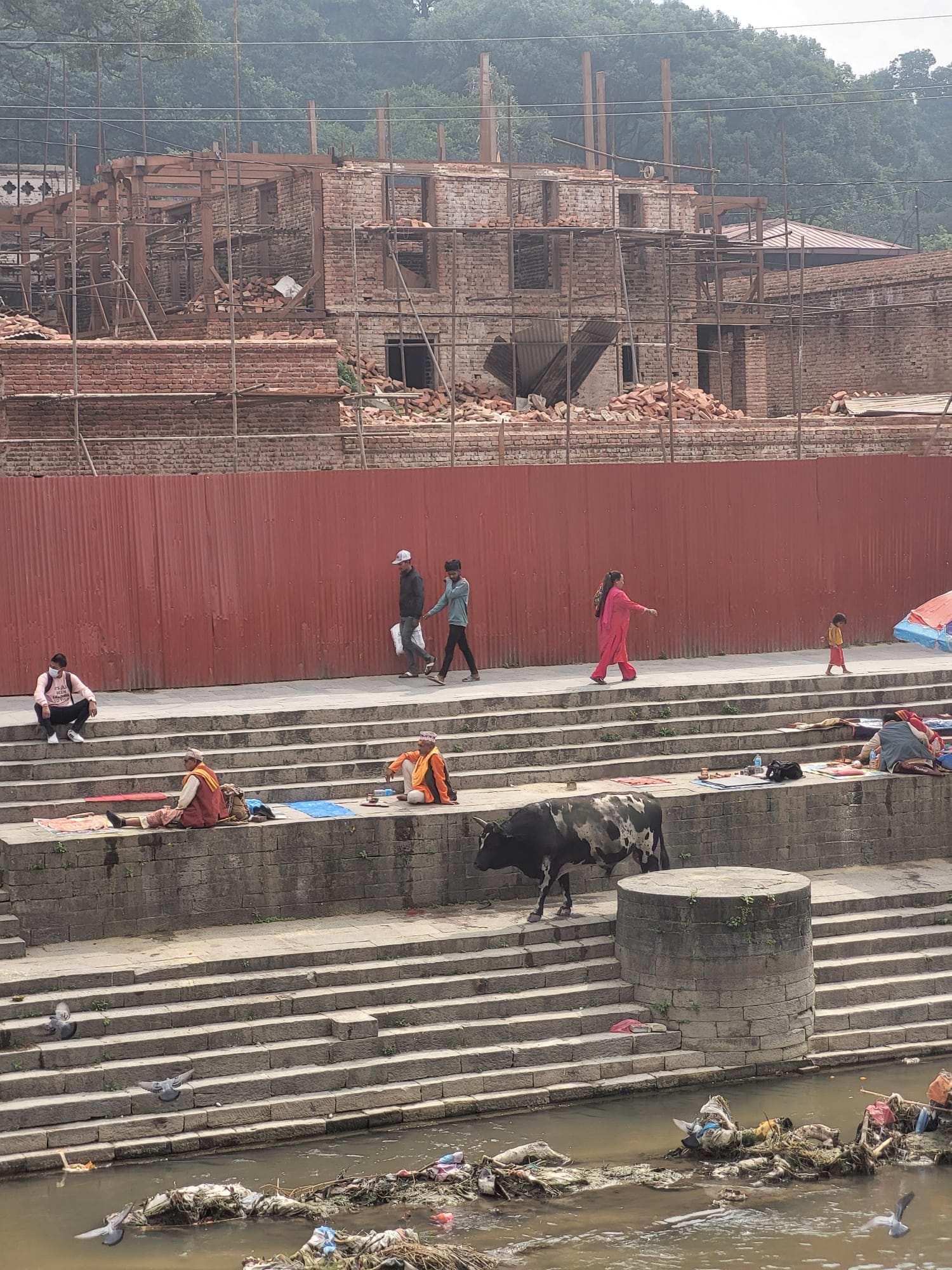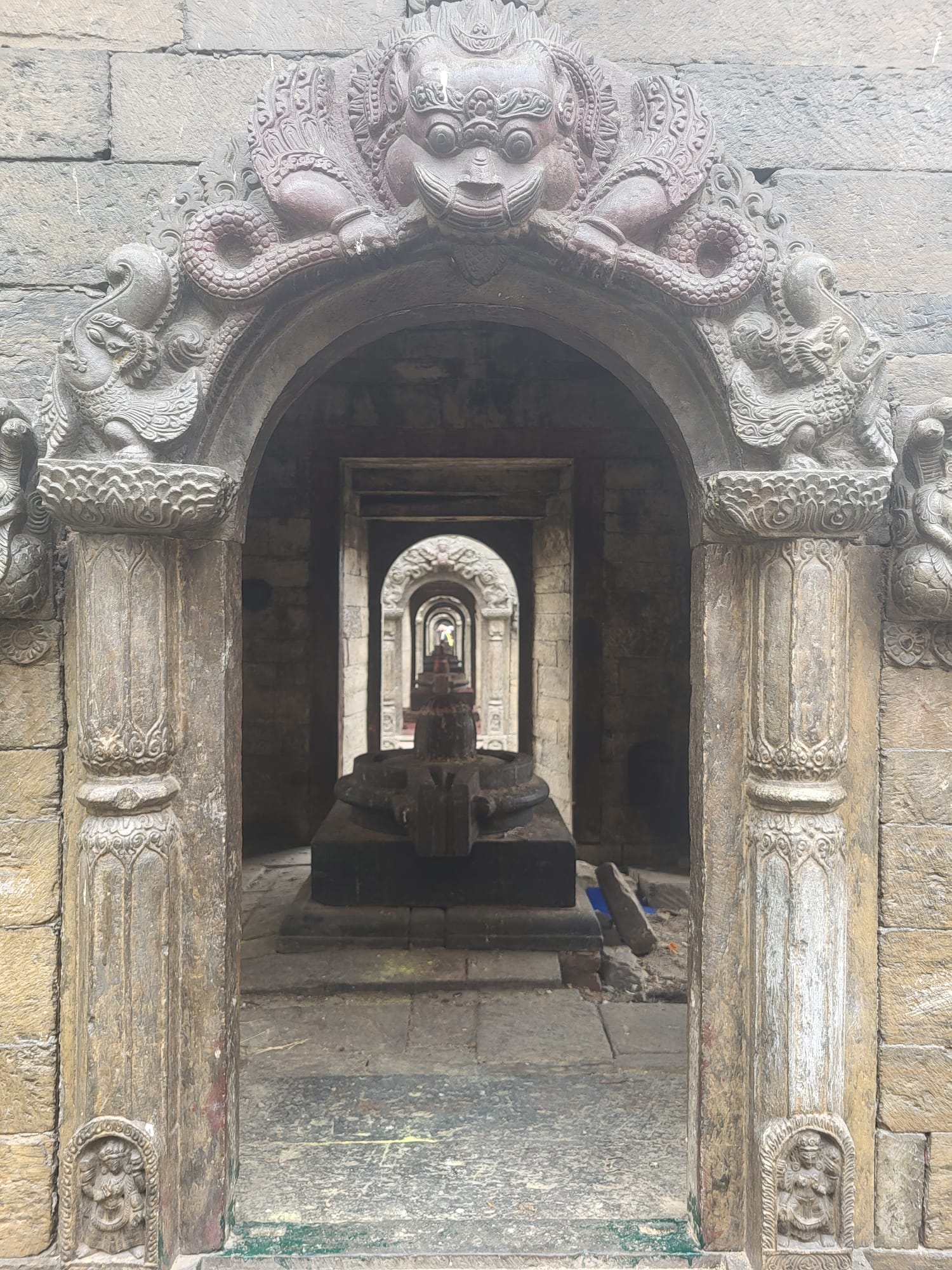Pashupatinath Temple
Pashupatinath, they told us, is as sacred to Hindus as the Buddha Stupa is to Buddhists. It is a place where devotion, life, and death weave themselves into the daily rhythm.

“Death is as certain for that which is born, as birth is for that which is dead. Therefore, grieve not for what is inevitable.” — Bhagavad Gita
The last day before our trekking adventure—the day before we’d meet our travel companions. We woke fairly early again, the anticipation of the mountains beginning to stir restlessly in my chest. After breakfast, we hopped in a small, dented Kathmandu taxi and set off toward Pashupatinath Temple, a place recommended to us the day before.
Pashupatinath, they told us, is as sacred to Hindus as the Buddha Stupa is to Buddhists. It is a place where devotion, life, and death weave themselves into the daily rhythm.

We arrived at the temple grounds, set along the banks of the Bagmati River. The air was thick with smoke and a sweetness that I later realized was sandalwood. After paying our entrance fee, we met our guide, a small man with a gentle voice but eyes that seemed to hold centuries of stories.

Our first sight took my breath away—down along the lower bank, thin plumes of smoke rose from funeral pyres. Men in white moved around them with solemn precision. According to Hindu belief, the passing of a loved one is a moment of spiritual significance—meant to be, in its essence, a reason to celebrate rather than a tragedy. Families remain beside the body for four hours, until it is reduced to ash. The remains that do not burn are carried by the Bagmati downstream, joining the sacred current.

Our guide explained the layers of privilege woven into these rituals: only the wealthy can afford to be cremated here, and the richest are burned closer to the river’s source, nearer to Shiva’s mountain home. Those cremated upstream are believed to return as humans in their next life; those farther downstream—or those unable to afford these rites—face reincarnation as animals. It was an unsettling reminder of the earthly hierarchies that persist even in the face of death.

We crossed the river, the stone steps slick from the constant washing of water and ash. A shrine stood before us, its stones darkened by centuries of offerings. Animal sacrifices had been made there—fresh blood staining the stones. Nearby, a massive bull, muscles rippling beneath its hide, casually wandered on the stairs, along the riverbed. Just like monkeys, they are seen as holy animals. People instinctively stepped aside, as if the river itself had shifted to make room for him.

On the opposite bank, we witnessed another family’s ritual: men pouring water over the lifeless form of their loved one, cleansing them for their journey. Right beside this scene was a linga, the symbolic representation of fertility, smooth and black from countless touches. Life and death meeting in the same square meter of stone. The ashes of the departed floated away, and in the same space, symbols of new life stood resolute.

I noticed men in pointed, triangular caps of bright fabric. The guide explained that these hats were worn only by people from a specific region of Nepal, a subtle badge of identity and belonging.
Our conversation turned to mourning customs: Hindu children shaving their heads except for a single tuft at the back, a symbolic link to their lineage; Buddhists shaving their heads entirely. Both wore white for a year after a loss—white as a shield against evil spirits, a contrast to the black of Western mourning. It struck me how each culture finds its own colors to guard the grieving.
An hour had passed before I realized it. When we returned to the bridge, we had a small conversation with long-bearded people. Claiming to be religious monks, they wear colorful powder and clothes. Our guide pulled us away and told us that Hindu monks portray scarcity, and these people are a faulty image of them—another tourist scam. As we made our way toward the exit, the crowd suddenly thickened. People were moving quickly, their faces alert. Before I could ask why, I saw it—another bull, this one enormous, horns long and sharp enough to make my stomach clench.
It was heading straight for the gate. I froze for a split second, meeting its dark, unblinking eyes. Adrenaline surged hot through my chest. I jumped sideways, the curve of a horn passing less than a meter from me. My heart thundered. Ahead of me, Kiki had already slipped through the gate. Moments later, I was on the other side too, lungs still tight.
We exchanged a wide-eyed look that said more than words could. In that moment, Pashupatinath had given us a unique insight into Nepali culture. More pure than we had experienced before. A reminder of how close life and death can walk, side by side, even in the space of a heartbeat.